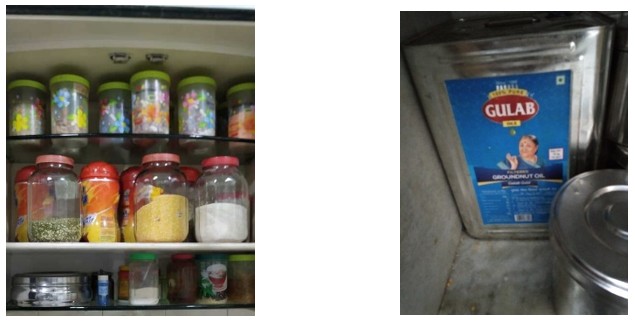The Family in India: The Extended Family vs. the Nuclear Family
- Release date: May 12, 2025
- 3622 Views
India has become the world's largest population power according to 2023 estimates (United Nations Department of Economic and Social Affairs). The International Monetary Fund (IMF) estimates that India's nominal GDP will overtake Japan's and rise to fourth place in the world by 2025. In addition to its growth stage, the Indian government's “Make in India” (manufacturing industry promotion policy) has encouraged Japanese companies to look at India with keen interest.
India used to have a large family size compared to other countries in the world (reference). In recent years, however, the number of nuclear families has been increasing, especially in urban areas, and a transformation from the traditional extended family is beginning to take place. However, in recent years, the number of nuclear families has been increasing, especially in urban areas, and the traditional extended family is beginning to change. It can be assumed that fluctuations in the composition of households will change who makes purchase decisions, and fluctuations in what is purchased as the number of household members decreases. This column will therefore compare and discuss the “extended family” and the “nuclear family” in India, using photographs of actual local residents from INTAGE's Consumer Life Panorama (a.k.a. CLP), a visual database of people living overseas.
In this column, we will compare the belongings in the homes of 14 extended families and 57 nuclear families registered in the Consumer Life Panorama (hereinafter referred to as “CLP”), and the structure of their homes, with “extended families” defined as households of 6 or more persons and “nuclear families” defined as households of 3 to 4 persons. In order to see overall trends, income, SEC (Social Economic Classification), and residential area are not asked.
How do the eating habits of extended and nuclear families differ?
The first step is to observe the kitchen area, including condiments, refrigerator contents, microwave oven, etc. It is easy to imagine that differences in the number of people in a household, i.e., the number of stomachs, will cause differences in the eating area.
Seasonings, cooking oil
In the extended families, seasonings were transferred and stored in larger containers, and for cooking oil, some families were seen to use the product in a one-dozen can.

Reference: INTAGE Consumer Life Panorama
Seasonings and spices in containers (left) and cooking oil in a large can (right)
On the other hand, households with nuclear families had slightly smaller storage containers for seasonings than those with extended families, and some households used ready-made seasoning containers as is. Containers of various sizes were seen for cooking oil, and a variety of packaging forms were seen, including bottles, metal containers, and bags of various materials.
Reference: INTAGE Consumer Life Panorama
Ready-made seasoning container (upper left), metal cooking oil container (upper center), various sizes of containers (upper right)
Cooking oil container/plastic (bottom left), metal (bottom center), bag type (bottom right)
Contents of refrigerator and freezer
Next, we look at the contents of the refrigerator/freezer.
The refrigerator/freezer of the extended family seems to be filled with food in dishes that would be used in the home, and ready-made food items are stored in the door pockets. In addition, while there are differences among households, overall the freezers appear to be so empty that they may not be utilized as much as they could be.

Reference: INTAGE Consumer Life Panorama
The refrigerator (2 left) and freezer (2 right) of the extended family
Nuclear families store food in dishes as well as extended families, but nuclear families are perceived to have more ready-made items in their refrigerators. Particularly unique to nuclear families is the use of ready-made soft drinks and juices, and it can be seen that nuclear families also have more water in containers. Although some households do not utilize the freezer as well as some extended families, those that do use it have more items in it, indicating that nuclear families also make good use of frozen storage in their daily diet.

Reference: INTAGE Consumer Life Panorama
Refrigerator (2 left) and freezer (2 right) of a nuclear family
Regarding the penetration rate of microwave ovens, a comparison of the number of microwave oven images associated with each household registered in the CLP shows that the penetration rate of microwave ovens is higher among nuclear families than among extended families. It is thought that the smaller number of household members may be taking simpler methods (freezing and microwaving) to reduce the burden of household chores.
Kitchen
Finally, as it relates to cooking and eating, we will touch on the differences in kitchens.
Both families have a large number of facing kitchens, and the configuration of stove, work table, and water/sink is arranged in either an I-shape, L-shape, or U-shape. In addition, gas stoves are seen as the most common type of stove because of the visibility of the hose. In some homes, the washing machine is located in the kitchen, and a laundry room/drying area is adjacent to the kitchen. The overall trend also suggests that the “room as a private space” aspect of each household is present, as many of the kitchens are closed kitchens with doors, and are located relatively far from the entrance.
Looking at the kitchens, one can see differences between families in the presence or absence of kitchen cupboard doors and ceiling fans. Kitchens equipped with these features appear to be more common among nuclear families. We feel that it is worth considering what kind of change in values has occurred behind the nuclear family's desire for these features.
Even if kitchen cupboards have doors, spices and spices are placed on racks without doors, so it seems necessary to consider the sizes to be developed based on the structure of the kitchen, including storage, and the frequency and amount of use.

Reference: INTAGE Consumer Life Panorama
Extended family without door (left), nuclear family with door (right)
Laundry
Next, as the number of people in a household changes, we can expect to see fluctuations in the amount of laundry done each day. Let us look at the laundry situation.
Laundry detergent
First of all, laundry detergents are roughly divided into “powder” and “liquid,” although some households use solid soap. Incidentally, since solid soap is shown along with powder and liquid detergents, we assume that they are used together. It appears that saris and other highly decorated garments are washed by hand with solid soap. As a trend, we feel that extended families prefer “powder” and nuclear families prefer “liquid”. In addition, many families transfer powder into containers, which tend to be larger than those for liquid detergents. Note that liquid fabric softeners are preferred by both families.
From the CLP photos, many of the items are in promotional packages, and the quantity of items stocked seems large from a Japanese perspective. It is possible that they may be hoarding during promotional sales.

Reference: INTAGE Consumer Life Panorama
Detergent for extended family (left), detergent for nuclear family (center and right)
Washing machine (laundry)
Looking at the washing machines owned by both families, it appears that vertical and double-layer washing machines are more common as a percentage, but drum-type washing machines were seen in several families in the nuclear family.
In terms of the market, we looked at the promotion page on Amazon India and found that while there are some two-layer models, the main promotion The main target markets are vertical and drum-type washing machines, although there are some two-layer washing machines. The price range of drum type is the most expensive, followed by vertical type and two-layer type, in that order. The vertical type has a more powerful washing effect, while the drum type has a drying function with a built-in heater and AI assist as additional functions other than washing, giving the impression that the drum type is more advanced.
These facts suggest that the Indian washing machine market is in the transitional stage toward automatic washing machines, and that nuclear family households in particular are choosing vertical and drum-type washing machines, which require less effort than double-layer washing machines, when purchasing washing machines.

Space for drying clothes
The main places for drying wet laundry for both families are balconies, balconies, and rooftops. The most common drying method is to hang laundry directly on taut strings or window/opening face grids, and the use of hangers appears to be a significant minority in the families. Although some nuclear families dry their clothes indoors, the majority of both types of families dry outdoors.

Finally.
I wonder if I have touched on the differences between the extended family and the nuclear family in India, with a focus on food and clothing. I personally feel that I was able to catch a glimpse of how the market is moving in parallel from the traditional extended family to the nuclear family, which is currently on the rise, as the familiar and the new are compared.
Consumer Life Panorama (CLP), which I cited in this column, has a rich stock of visual data on sei-katsu-sha in various countries. These data can be used as a “no-field” home visit survey to get a realistic picture of category usage and to understand the overall lifestyle of target consumers. By taking a peek at the data before conducting on-site surveys, this tool allows us to get a clearer picture of sei-katsu-sha.
Because it is difficult to imagine the target consumers in overseas markets, it is important to use visual data to gain a clearer understanding of overseas sei-katsu-sha and conduct overseas marketing planning.
Translated with AI Translator
What is Consumer Life Panorama?
This is a website-type database that has accumulated visual data on more than 1,000 sei-katsu-sha from 18 countries around the world. The database includes many 3D models of living environments and 2D data of items owned by each sei-katsu-sha, and is useful for understanding overseas sei-katsu-sha, which is difficult to grasp using only letters and numbers.
For details, click here.
Using visual data such as those cited in this column,
Compare the differences in the attributes of overseas consumers
To get a realistic understanding of the actual usage of each category
To understand the overall lifestyle of target consumers
etc., can be utilized as a “no-go” home visit survey.
-

Author profile
Takumi Ueda
He is involved in marketing research for durable goods manufacturers, both in Japan and overseas. When he travels abroad, he visits supermarkets to observe people living in the area, and he finds it interesting to unravel their preferences based on the package designs of the products on display.
-

Editor profile
Risa Takahama
After working in marketing research support for Japanese FMCG manufacturers (cosmetics, baby products, food and beverages, etc.) in Asia, Europe, and the United States, from 2019, in her current position, she develops solutions for overseas marketing research for Japanese companies and conducts seminars and other outward communications.
Since the birth of her child, her greatest concern is how to maintain the physical and mental health of her family and herself, and she has been experimenting with various goods and services.
 Global Market Surfer
Global Market Surfer CLP
CLP